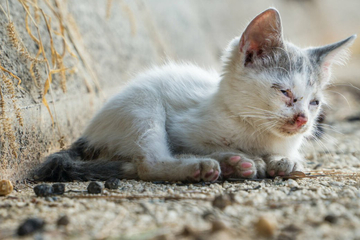How to introduce a second cat into your home
Cat owners only ever want the best for their beloved feline friends. So if you find yourself away from home a lot and are worried about your cat getting lonely, you might be thinking of getting it some company. But is that a good idea and how are you supposed to go about it? Read on and find out!

Cats might seem like loners. If you only have one cat, you'll have noticed they're seriously territorial animals who aren't too eager to share.
The reality, though, is more complicated than that. Cats might hunt alone, but they actually need quite a lot of social interaction.
So getting your little buddy a playmate really does make sense. The problem, though, is that this backfires all too often, ending in a fight between two cats vying for territory. Loud meowing, hissing, and even violence are just a few consequences of an unsuccessful integration.
But have no fear, our cat guide is here to help you successfully introduce a second cat to your household.
We can, in fact, all just get along with a few simple steps.
Should I get another cat?
Whether you add another cat to your household is, of course, a personal choice. You should think long and hard about it, though, and consider all the characteristics and needs of your existing pet before moving forward.
Here are a few things to think about:
- How long has your existing cat been the only pet in the household for?
- How old is your cat?
- What's your cat's character?
- What is your cat's sex?
- Does your cat have certain needs based on its breed?
- Is your current cat an indoor or outdoor cat?
- What experience does it have with other cats?
Quieter and more senior cats do not usually get along particularly well with active and playful kittens. You can't blame them, those little guys are absolutely adorable, but also incredibly needy at times.
As a rule, if your existing cat is more than eight years old, it's not a good idea to bring in a new furry friend.
Cat owners should also consider:
- The size of their apartment or house
- The doubling of cat-related costs will now double
- The increased time demands of a second
- The consequences of having a second cat for future and family plans
A cat owner should not spend less time with one cat as a result of getting a second cat. Time should be split equally, and it should be clear that this requires a larger time commitment.
On space: Even a small apartment can offer enough space for two cats. Make sure that there are multiple levels of furniture for the cat to climb on and explore, so that it can get enough movement.
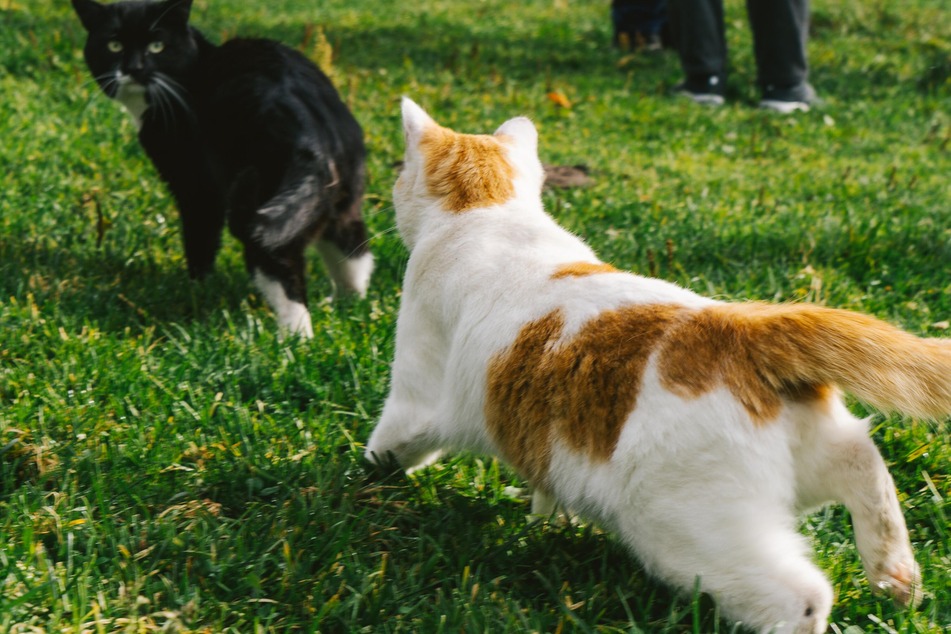
Do cats get along with other cats?
Cats are famous for being solitary and possessive of their own space. They are inherently suspicious of other cats, due to their highly territorial nature and personalities, and it takes a long time for these feline friends to make feline friends of their own.
Some cats will never make friends with others of their own kind, and that's okay. But they will eventually get used to the presence of a second cat in their home, even if they don't necessarily become "friendly". Instead, cats will learn to avoid one another as much as possible and, after a while, fights will decrease.
A general rule of thumb is that cats take around a year to become truly integrated in a multiple kitty household, whether that means actually enjoying each other's company or just simply tolerating one another.
Which cats get along?
Cats are never particularly predictable animals, and the same goes for whether two individuals will get along. Luckily, though, there are a few factors that will make friendship more viable and likely.
Here are a few factors that increase the likelihood of cats getting along:
- Siblings: Kittens from a litter, who have not been separated for too long, will often get along very well.
- Kittens: Younger cats are yet to develop a strong connection to territory. This will make them more likely to share the space peacefully.
- An older adult with a young kitten: This is less likely, but still possible. Beware, though, older cats find younger cats incredibly irritating.
- Adults: If an adult cat hasn't been alone for too long (perhaps their former cat companion died recently) then they will be less hostile towards a perceived intruder on their territory.
- Neutered cats: Non-neutered males continuously engage in power struggles, so it is recommended that your cat is neutered if you are introducing it to another.
A cat's personal character is far more indicative of whether it will be ok with a second cat, though. A quiet feline will not get along with an active one, for example – neither will an aggressive cat get along with a docile one.
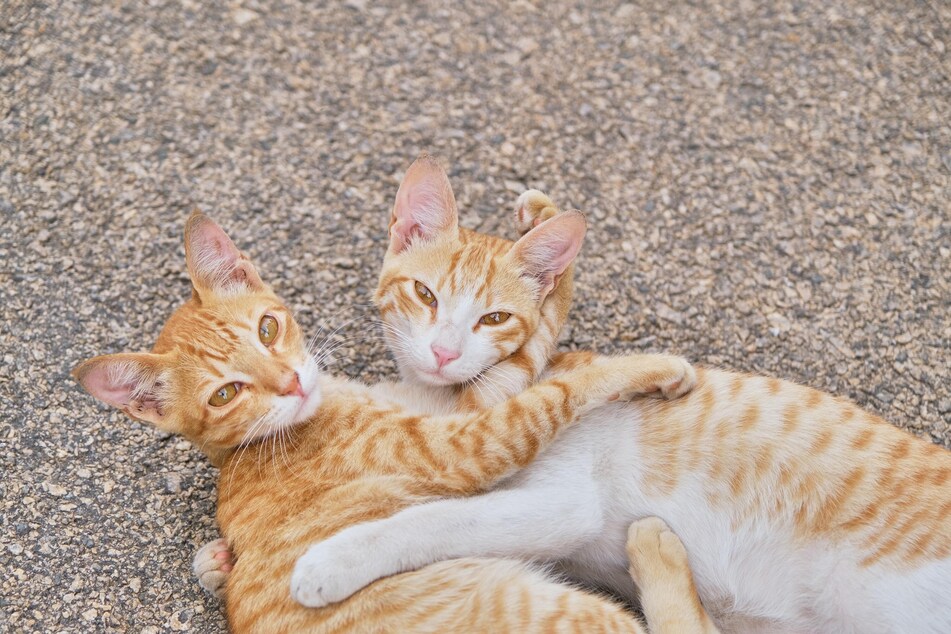
Prep work for a second cat
You need to prepare well for the introduction of a second cat. It's not as easy as just keeping everything you already have and taking the dive.
Your new cat will need its own equipment, including:
- Its own litter box
- Its own food and drinking bowls, in a separate location
- New toys just for your new kitty
- Scratching facilities that haven't been used by the old cat
- Specific sleeping spots that are nice for the new cat and private
You need to designate a specific room where the new cat will spend its first few days, and not allow the old cat into the room for a good amount of time before your new kitty takes up residence. Partition fences should be purchased and at the ready.
There are a number of steps to integration, but the most important thing is that you are aware of the challenges, needs, and requirements of a household that contains several cats.
How to ensure cats get along in four steps
Successful coexistence between two cats hinges on the owner's ability to gradually get them used to each other. The length of this process depends on the cats themselves – it can take anywhere from a few months to a few years.
If you want your cats to become pals, though, you're going to want to follow these four steps to introducing a second cat.
Step 1: Let the cats hear each other
The first step is to keep the two cats in separate rooms. Under no circumstances should you just plop a new kitty next to your existing, possibly older cat, in the hope that they can just figure it out. This will destroy the trust that the new cat has in you, and could even prove dangerous.
It is best to keep the new cat apart at the beginning, in a pre-prepared room away from the other kitty. Cats need time to settle into a new environment, and can be seriously fearful in such a situation – especially if we're talking a kitten who was only recently separated from its mother.
Make sure that both cats can hear each other moving around in their respective areas, so that they are aware of the other's presence.
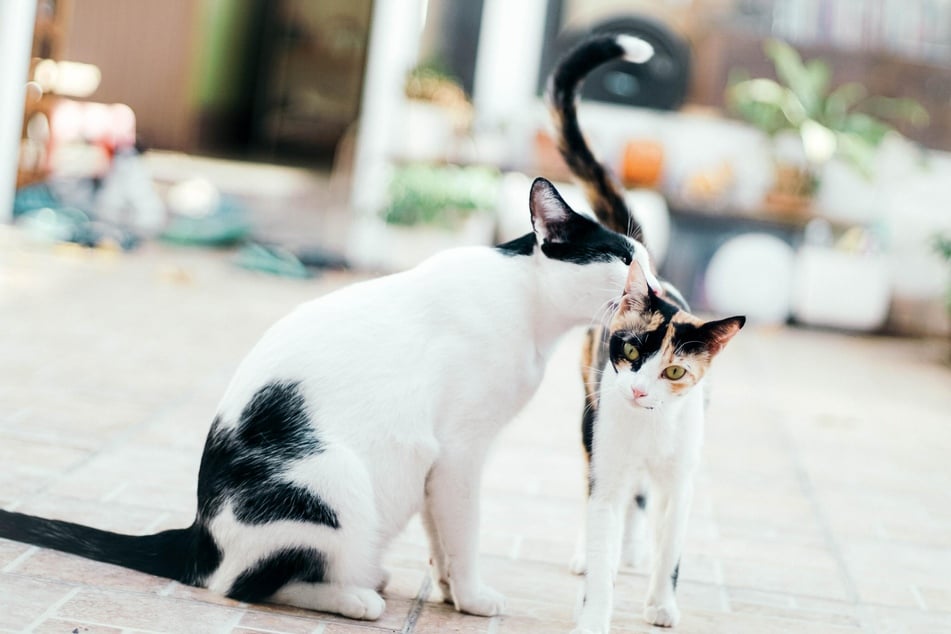
Step 2: Let the cats smell each other
Unlike humans, whose sense of smell is relatively weak and not as important as sight, a cat's smell is critical to its communication. Once your new cat has arrived and settled into the new environment, the exchange of smell can begin.
Here are a few ways that this can be done:
- Give the new cat's blankets, toys, and pillows to the older kitty, and vice versa.
- Swap the cats, so that they are in the room in which the other cat previously inhabited. They shouldn't see each other during this process, though.
- Swap out the cats' litter boxes.
- Rub a piece of fabric on each cat and then let one smell the other's item.
- Feed the cats on the other side of the same door, so that they are aware of each other's presence and associate the other cat's smell with a positive experience.
If you don't allow each cat to get used to the other's scent, then this could cause some problems down the line. It will also upset your buddy because you'll star to smell like someone else.
Hot Tip: You can get pheromones from pet stores to help with the process of integrating a second cat into the household.
Step 3: Let the cats see each other
Once the cats have gotten used to each other's sound and smell, you should allow them to actually see each other through a partition grill, a door left ajar, or a window. It's possible that one cat will try to attack the other, so be present throughout the process.
The two should be able to observe each other for however long it takes for them to become familiar. It's also recommended that you feed them in front of each other at the same time.
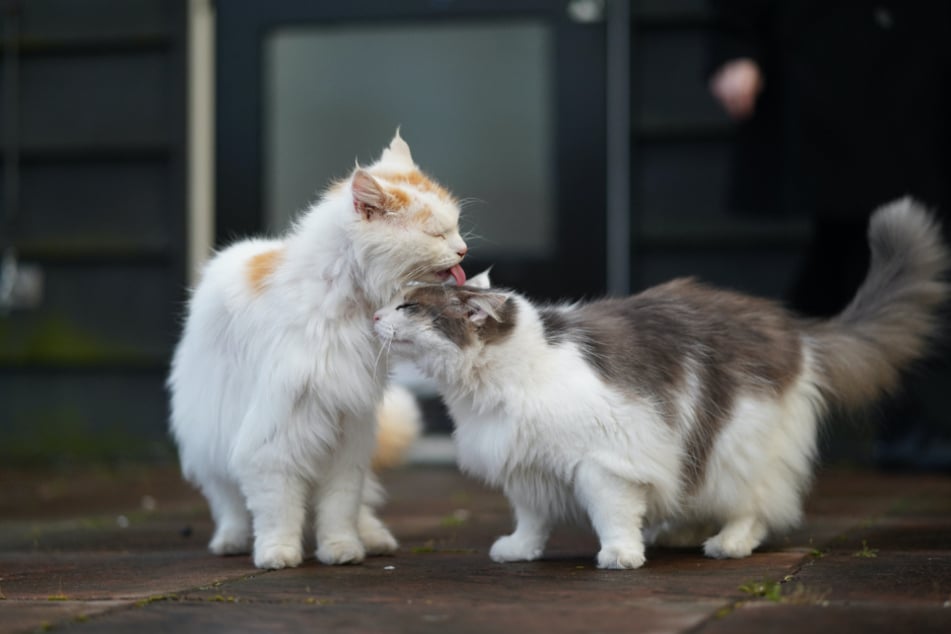
Step 4: Let the cats meet each other
It is imperative that cat owners remain calm and present during this phase, as it can be quite touch and go. The two cats need to finally meet and be able to interact, so don't get too hands-on. This needs to be a natural interaction.
Snarling, scratching, minor fights, and arguments are normal, as long as they don't escalate. A natural hierarchy needs the time and space to develop, this is just how things work when it comes to cats. If there's ever the risk of serious injury, then you should of course intervene, and in any case, the cats should only directly interact for a few hours a day at the start to reduce their stress.
Allow your cats to set their own pace, and don't make it too nerve wracking for them. You should never force them to interact, but do incentivize them to be together by offering food, treats, and playtime.
Additional tips and tricks for bringing a second cat home
Introducing a second cat to a household can be a difficult process, with many fights and squabbles along the way. Whenever one of the four steps gets too hard, it is a good idea to return to the previous phase and continue to take things slowly. You want them to get used to each other properly, not quickly.
Here are some other useful tips and tricks:
- Remember to stay patient and calm, don't be nervous around the cats.
- Keep in mind that this is stressful on the cats, and even usually calm or loving cats can turn into vicious little beasts when pushed to defend their territory.
- Don't punish your cats for bad behavior, just incentivize good behavior.
- Make sure to continue giving your original cat just as much attention and love as before, so that it doesn't get jealous.
- Regularly reassure the older cat and keep it calm, showing it that the new cat shouldn't be a stress.
- Ensure that you don't smell too much like the new cat, so that the older cat doesn't think that it has been replaced.
Make sure that you maintain separate areas for both cats, so that they have somewhere to retreat to when they feel threatened, stressed, or unsafe.
So this is how you introduce two cats
No friendship can be forced, and that goes for cats as much as it does for humans.
Ultimately, there's no guarantee that your cats will become buddies, but there's every chance they'll learn how to put up with each other.
By taking it easy, while staying incredibly patient and cautious, you should be able to introduce a second cat into your household. Take the steps one by one, go back if you need to, and show both of your kitties all the love in the world.
Cover photo: Unsplash / Fuu J

